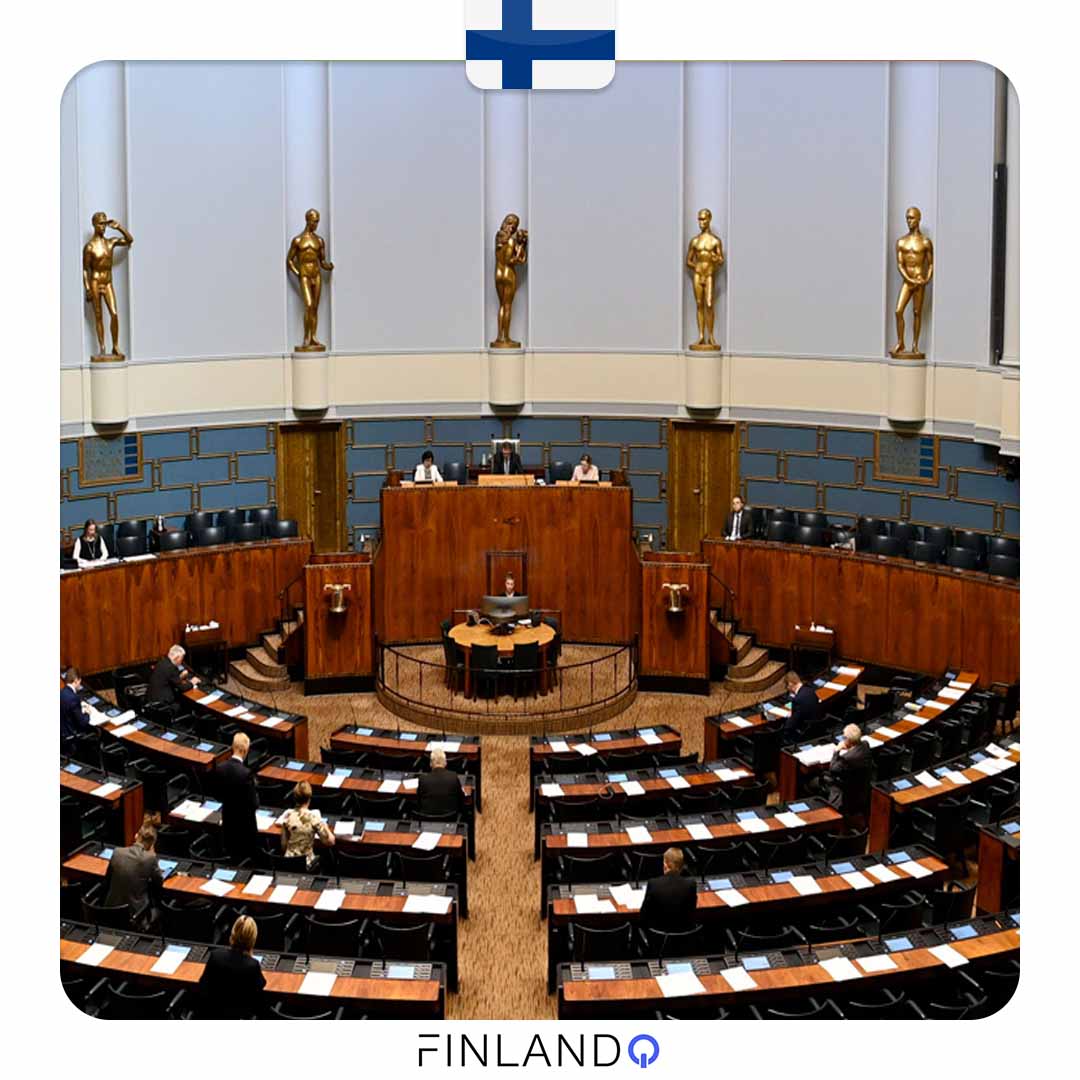The Constitution of Finland (Finnish: Suomen perustuslaki or Swedish: Finland grundlag) is the primary source of national laws in Finland. The Finnish Constitution establishes the structure and relationships between various institutions and fully defines the fundamental rights of Finnish citizens and residents. The original Constitution was approved in 1919, shortly after Finland declared its independence in 1917. The current draft of the Constitution came into effect on March 1, 2000.
Amendments to the Finnish Constitution
The fundamental principles of the 1919 Constitution and the Parliament Act of 1906 (amended in 1928) remained unchanged during the first fifty years of Finnish independence. However, this prevented the Constitution from adapting to changes in society. The flexibility of the Finnish Constitution comes from the use of extraordinary laws, which is a unique feature of the Finnish system. Instead of amending the Constitution, a temporary exception law can be passed. These exceptional laws are not considered part of the Constitution and can be repealed like regular laws. In the past, exceptional laws were used extensively, but it created concerns about weakening the Constitution, leading to restrictions on their use.
The first significant constitutional amendments were made in 1983, involving substantial revisions to important parliamentary procedural regulations. However, the most extensive and important changes occurred in 1987 when provisions for referendums on the Constitution were introduced. This law included the indirect election of the President through an electoral college, and the rules for the delay of ordinary legislative bills were modified to shorten the delay period.
In 1991, direct popular elections for the President were introduced. The new system was first used in Finland in 1994. The presidential term was also limited to two consecutive six-year terms, and the President’s powers were restricted to dissolving Parliament only after receiving a proposal from the Prime Minister and following specific legal procedures. Prior to these changes, the President had more extensive powers. The 1991 amendments also modified provisions of the Constitution and the Parliament Act regarding government assets.
In the 1990s, there was a recognized need for the consolidation and modernization of the Constitution, while many other European countries had already integrated all fundamental regulations into a single Constitution. In Finland, these rules remained fragmented across several separate laws. The process of amending the Constitution began, in part, as a result of debates between the Parliament and the President over the decision-making rules on European matters. The President of Finland was required to participate in meetings of the European Council together with the Prime Minister and subject to parliamentary control.
In 1995, a group of experts known as the Constitutional Law Committee 2000 was established to examine the need to update the Constitution. This committee recommended consolidating all the provisions of the Constitution into a single constitutional code and suggested that the key focus of the constitutional changes should be the development of relations between the highest state organs. Clarifying powers and responsibilities in international affairs was one of the areas of attention. This committee also proposed a new structure for the new Constitution.
Amendments to the Finnish Constitution
In 1996, following the report of the Government Committee, the Constitutional Law Committee 2000 was formed to prepare a draft proposal for a new Constitution. This committee was tasked with producing a draft proposal for a new government constitutional code to replace the four existing constitutional laws. In 1998, the draft was reviewed by the Constitutional Law Committee, which ultimately presented its report on the draft in January 1999. On February 12, the Parliament approved the committee’s proposal to suspend the new Constitution until after the general elections. The new Parliament, elected in March 1999, approved the new Constitution in June, and the President also gave their approval.
Since then, the Finnish Constitution has been amended several times, especially in 2011 to provide for legislative proposals to Parliament and in 2017 to expand the police and security services’ access to private communications.
Key Provisions of the Finnish Constitution
The official text of the Constitution consists of 131 sections divided into 13 chapters, which include:
- Basic Provisions
- Fundamental Rights and Freedoms
- Parliament and the Representatives
- Parliamentary Procedure
- The President of the Republic and the Government
- Legislation
- State Assets
- International Relations
- Administration of Justice
- Supervision of the Legality of Government
- Organization
- Defence
- Final Provisions
Basic Provisions and Fundamental Rights
The introductory chapter on Basic Provisions confirms Finland’s status as an independent republic, emphasizing the inviolability of human dignity and the rights of individuals, and the sovereignty of the Finnish people. The Constitution underscores democratic principles, the supremacy of Parliament as the highest state organ, the separation of powers, the independence of the judiciary, and the principle of parliamentary government.
The Fundamental Rights chapter reflects the European Convention on Human Rights and includes rights related to education, social and economic rights, and political freedoms.
Constitutional Provisions on Government Bodies
The Constitution establishes a semi-presidential government system, consisting of a strong and directly elected President, a government composed of the Prime Minister and government ministers, and the Parliament of Finland. An independent judiciary is provided, with two separate judicial systems: general and administrative.
Parliament of Finland
One of the main goals of the constitutional reform process was to further develop a parliamentary system of government in Finland. The new Constitution strengthens the role of the Parliament as the highest state organ and makes it easier for the legislative branch to function efficiently.
In the traditional sense, the Finnish Parliament has the right to access all necessary information from the government and ministries to carry out its tasks. Additionally, parliamentary committees also have the right to access information and reports related to their areas of responsibility, provided the information isn’t classified or linked to the government’s budgetary proposal.
The President and the Government
Major changes in the new Constitution relate to decision-making by the President and the formation of the government. It clarifies the decision-making procedures of the President, with the government becoming more accountable and subject to the confidence of the Parliament. Most significantly, the new Constitution transfers the final decision on approving and cancelling government bills, including draft laws in the area of foreign policy, from the President to the government.
Regarding the formation of the government, the new Constitutional provisions transfer the power to appoint the Prime Minister from the President to the Parliament, making the Parliament the primary decision-maker in this process. This new Constitution effectively diminishes the leadership role of the President in forming the government, and the President plays a prominent role only when the parliamentary groups fail to reach an agreement based on a suitable government program and an appropriate candidate for the position of Prime Minister.
These amendments emphasize a strong parliamentary system and enhance the role of the Parliament, particularly in government formation and legislative decision-making.

10 Key Principles of the Finnish Constitution
In this section, we will examine several of the fundamental principles of the laws of this country:
Principle 1 of the Finnish Constitution: Finland is an independent republic. The Finnish Constitution protects human dignity, freedom, and the rights of individuals and promotes justice in society.
Principle 2 of the Constitution: Democracy and the rule of law. The government in Finland belongs to the people, and the individuals in the Parliament represent the people. Democracy includes the right of individuals to participate in the development of society and their living environment.
Principle 3 of the Constitution: Division of government functions. The power of legislation is exercised by the Parliament, which also decides on government finances. The executive power is exercised by the President and the Council of State, whose members must have the confidence of the Parliament. The highest courts in the country are the Supreme Court and the Supreme Administrative Court.
Principle 4 of the Constitution: The territory of Finland is indivisible. The borders of the realm may not be altered without the consent of the Parliament.
Principle 5 of the Constitution: Finnish citizenship is acquired by birth or descent, as specified in detail by law. Citizenship may also be granted upon application and under the conditions prescribed by law.
Principle 6 of the Constitution: Everyone is equal before the law. No one shall be treated differently from other persons on the ground of sex, age, origin, language, religion, conviction, opinion, health, disability, or any other reason that concerns his or her person. Children must be treated equally and their equality must be ensured especially in social and working life, as is laid down in more detail by an Act.
Principle 7 of the Constitution: Every person has the right to life, personal liberty, integrity, and security. No one shall be sentenced to death, tortured or otherwise treated in a manner violating human dignity.
Principle 8 of the Constitution: No one shall be sentenced to a punishment more severe than provided by the law.
Principle 9 of the Constitution: Every Finnish citizen and every foreigner permanently resident in Finland has the right to move to and settle in any part of the country. Every Finnish citizen has the right to leave the country. This right may be subject to restrictions, which shall be laid down by an Act, if they are necessary for the purpose of safeguarding legal proceedings, for the enforcement of penalties or for the fulfilment of the duty of national defence.
Principle 10 of the Constitution: Particular attention shall be paid to the child’s right to security and care. The child’s welfare shall be a primary consideration in all actions concerning children, whether taken by public authorities or private individuals.
These are some of the key principles outlined in the Finnish Constitution, covering a range of fundamental rights and the structure of government. The Constitution also addresses numerous other matters, such as the eligibility of representatives for elections, the powers of various national institutions, impeachment, parliamentary committees, presidential duties, government responsibilities, financial matters, taxation, and much more, providing a comprehensive guide for governing the country by both the Parliament and the government.












